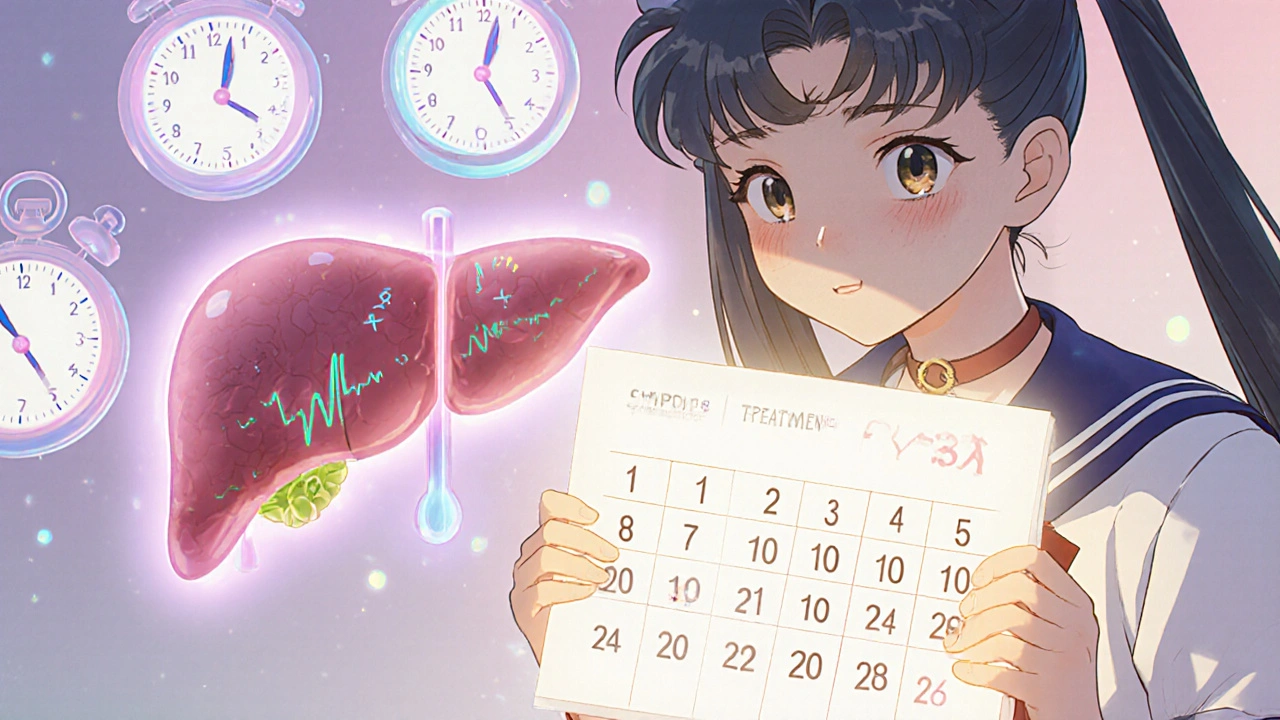Rifampin Drug Interaction Checker
Check Your Medications
Enter your current medications to see if they interact with rifampin. Rifampin can reduce effectiveness of many drugs by up to 90%.
Select medications to check interactions
Critical Safety Information
If you're taking rifampin and another medication, wait 4 weeks after stopping rifampin before starting new drugs with narrow therapeutic windows (like warfarin or seizure medications).
For most other medications, wait 2 weeks after stopping rifampin.
Rifampin is one of the most powerful drugs used to treat tuberculosis, but it’s also one of the most dangerous if you’re taking other medications. It doesn’t just kill TB bacteria-it rewires your body’s ability to process almost everything else you take. This isn’t a minor side effect. It’s a systemic shift that can turn a safe drug into a life-threatening one. If you’re on rifampin for TB, or you’re caring for someone who is, understanding how it interacts with other drugs isn’t optional-it’s essential.
How Rifampin Works Against TB
Rifampin, also known as rifampicin, was first developed in the 1960s and revolutionized TB treatment. Before its introduction, patients had to take antibiotics for up to 18 months. With rifampin in the mix, that dropped to just six months. That’s a 66% reduction in treatment time-and millions of lives saved. It works by blocking a key enzyme in the TB bacteria called RNA polymerase. Without this enzyme, the bacteria can’t make the proteins they need to survive. What makes rifampin special is that it kills both active and dormant TB bacteria hiding inside cells. It reaches high concentrations in the blood-around 7 mcg/mL after a standard 600 mg dose-and works best on an empty stomach. Eating food can cut absorption by 30%. But here’s the twist: while rifampin is killing TB, it’s also triggering your body to change how it handles other drugs.The Hidden Power: Rifampin Induces Liver Enzymes
Rifampin doesn’t just act on bacteria. It turns on a switch in your liver called the pregnane X receptor (PXR). Once activated, this switch tells your liver to make more of certain enzymes-especially CYP3A4-and transporters like P-glycoprotein. These are the same systems your body uses to break down and clear out drugs like statins, birth control pills, blood thinners, and even some HIV medications. Within 24 hours of taking rifampin, your liver starts producing more CYP3A4. By day 5 to 7, enzyme activity can jump by 200% to 400%. That means drugs metabolized by CYP3A4 get broken down way faster than normal. Their levels in your blood drop-sometimes dramatically. Here’s what that looks like in real numbers:- Oral contraceptives: 67% lower blood levels → risk of unintended pregnancy
- Warfarin: 42% lower blood levels → increased risk of blood clots
- HIV protease inhibitors: 75% to 90% lower levels → treatment failure, drug resistance
- Some antidepressants and antifungals: up to 80% reduction → loss of symptom control
Rifampin’s Long Shadow: It Doesn’t Stop When You Quit
Most people assume that once you stop taking rifampin, the interactions go away. They don’t. Because the liver enzymes it induces don’t vanish overnight. They stick around for up to two weeks after your last dose. That means if you stop rifampin on Day 30 and start a new medication on Day 31, you’re still at risk. For drugs with a narrow therapeutic window-like warfarin, cyclosporine, or certain anti-seizure meds-you need a full four-week washout period before switching. Rushing this can lead to overdose when the enzyme levels finally drop and the new drug builds up too fast. Clinicians often miss this. A patient finishes TB treatment, starts a new antidepressant, and ends up in the hospital because their blood levels spiked. It’s not the new drug’s fault-it’s the lingering effect of rifampin.
The Paradox: Rifampin Makes TB Tolerant to Itself
Here’s where things get even stranger. Rifampin doesn’t just affect your body-it affects the TB bacteria too. Research shows that within hours of exposure, some TB bacteria start pumping rifampin out of their cells using efflux pumps. It’s like the bacteria learn to spit out the drug. And even more surprisingly, rifampin itself triggers this response. At low doses, it turns on genes in the bacteria that help them survive the very drug meant to kill them. This self-induced tolerance is one reason why TB treatment takes so long. Even if most bacteria die, this small group survives, hides, and can restart the infection later. That’s why treatment must last at least six months. Shorter courses lead to relapse rates above 25%.Can We Fight Back? New Strategies to Block Rifampin’s Effects
Scientists are now testing ways to shut down those bacterial efflux pumps. One promising target? Common drugs you might already be taking. Proton pump inhibitors (PPIs) like omeprazole, usually prescribed for heartburn, were found to block TB’s rifampin-pumping system. In lab tests, omeprazole reduced efflux by 68%. Verapamil, a heart medication, did something similar. Both are safe, widely available, and already used in millions of people. If these drugs can stop TB from resisting rifampin, we might be able to shorten treatment from six months to three. Clinical trials are already underway. Early results in mice show relapse rates dropping from 25% to under 5% when rifampin is combined with verapamil or omeprazole. This isn’t just science fiction. It could change global TB care overnight. In countries with high TB burden, cutting treatment time by half means more people finish their meds, fewer spread the disease, and fewer develop drug-resistant strains.
What You Need to Do If You’re on Rifampin
If you’re prescribed rifampin, here’s what you must do:- List every medication you take-prescription, over-the-counter, herbal, supplements. Even melatonin or St. John’s wort can interact.
- Ask your doctor or pharmacist if any of them are metabolized by CYP3A4. If they are, they might need adjusting.
- Don’t start or stop anything without checking first. That includes painkillers, antacids, or sleep aids.
- Use backup birth control if you’re on hormonal contraceptives. Rifampin makes them useless.
- Wait four weeks after finishing rifampin before starting new drugs with narrow safety margins.
- Monitor for side effects-especially liver issues. Rifampin can cause hepatitis. Get liver tests at the start of treatment and every 2-4 weeks.
When Rifampin Is a Double-Edged Sword
There’s a twist to rifampin’s liver effects. In people with cholestatic liver disease-like primary biliary cirrhosis-it’s actually used off-label to relieve severe itching. How? By boosting CYP3A4, it helps break down bile acids faster, reducing their buildup in the skin. About 70-80% of patients get relief. But this same mechanism is what makes it dangerous for others. The same enzyme that helps one person stop itching is the one that makes another person’s blood thinner ineffective. It’s the same drug. Same biology. Different outcomes.Why This Matters Beyond TB
Rifampin is a warning sign. It shows how one drug can ripple through the entire system. As we develop more targeted therapies, we’ll see more drugs like this-powerful, but with hidden, broad effects. TB treatment is a global health priority. But the real challenge isn’t just killing the bacteria. It’s managing the side effects, interactions, and unintended consequences that come with the cure. Rifampin saves lives-but only if we use it wisely.Right now, about 3.5 million people start rifampin-based TB treatment every year. Most will complete it successfully. But for those who don’t-because of an interaction, a missed dose, or an unmonitored side effect-the cost is far higher than just a relapse. It’s drug resistance. It’s longer, costlier treatment. It’s death.
Understanding rifampin’s interactions isn’t just for doctors. It’s for patients, caregivers, pharmacists, and public health workers. Because when a drug changes how your body works, you don’t just need to know what it does. You need to know what else it changes.
Can I take birth control while on rifampin?
No. Rifampin reduces the effectiveness of hormonal birth control by up to 67%, making pregnancy likely. You must use a non-hormonal method like condoms, a copper IUD, or a diaphragm while taking rifampin and for at least four weeks after stopping it. Do not rely on pills, patches, or rings.
How long after stopping rifampin can I start a new medication?
For most drugs, wait two weeks. For drugs with a narrow therapeutic window-like warfarin, cyclosporine, or some seizure meds-wait four weeks. The liver enzymes induced by rifampin take time to break down. Starting too soon can lead to dangerous drug buildup and toxicity.
Does rifampin cause liver damage?
Yes, in about 10-20% of people, rifampin causes elevated liver enzymes. In rare cases, it leads to drug-induced hepatitis. Symptoms include yellow skin, dark urine, nausea, or fatigue. Liver function tests are required at the start of treatment and every 2-4 weeks during therapy. If enzymes rise above three times the normal level, rifampin may need to be stopped.
Can I take omeprazole or other PPIs with rifampin?
Yes, and it might even help. Research shows that omeprazole and other proton pump inhibitors can block TB bacteria from pumping rifampin out of their cells. This may improve treatment effectiveness and could one day shorten TB therapy. However, always consult your doctor before combining them-your dose may need adjustment.
Why does TB treatment take six months if rifampin kills bacteria fast?
Because rifampin triggers a survival response in some TB bacteria. Within hours, a small group of bacteria activate efflux pumps and enter a dormant state, becoming tolerant to the drug. These survivors can restart the infection if treatment is stopped early. Six months ensures all bacterial populations-including these hidden ones-are fully eradicated. Shorter courses lead to relapse in over 25% of cases.
Are there alternatives to rifampin for TB?
For drug-sensitive TB, no. Rifampin is the only drug that can shorten treatment to six months. For drug-resistant TB, alternatives like bedaquiline or linezolid are used, but they’re more toxic and expensive. Rifampin remains the backbone of global TB treatment because no other drug matches its combination of potency, safety, and cost-effectiveness.

Mickey Murray
October 27, 2025 AT 20:22Kevin McAllister
October 27, 2025 AT 23:04Marcia Martins
October 29, 2025 AT 21:12Robert Bowser
October 30, 2025 AT 14:37Sue M
November 1, 2025 AT 12:29Rachel Harrison
November 2, 2025 AT 12:40Tiffanie Doyle
November 4, 2025 AT 01:07james landon
November 4, 2025 AT 04:13Jenn Clark
November 5, 2025 AT 16:58L Walker
November 6, 2025 AT 07:21giri pranata
November 7, 2025 AT 16:54